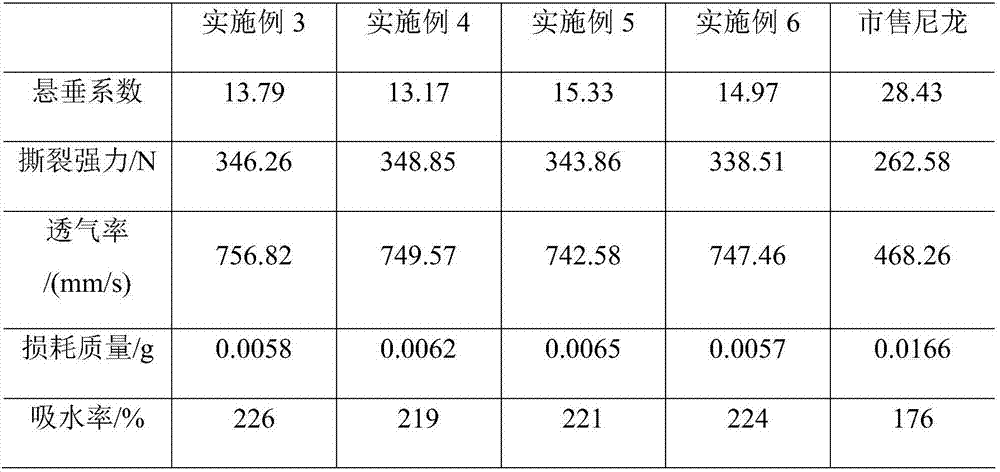Bio-based nylon fabric and preparation process thereof
A bio-based nylon and fabric technology, applied in the textile field, can solve few problems and achieve the effect of improving comprehensive performance, good drape and hygroscopicity, and good tensile properties
- Summary
- Abstract
- Description
- Claims
- Application Information
AI Technical Summary
Problems solved by technology
Method used
Image
Examples
Embodiment 1
[0038] A kind of bio-based nylon particle provided in this embodiment is made according to the following steps:
[0039] The cad A gene in Escherichia coli was amplified by PCR, then connected into pUC18, the plasmid was transferred into the host strain Escherichia coli JM109, and the transformant was selected by kanamycin;
[0040] The E.coli JM109pcad A strain is cultured in the culture medium, the seed liquid is inserted into the culture medium, and cultured in a fermenter;
[0041] After cultivation, the culture is transferred to a fermenter to continue the cultivation. After the cultivation, IPTG is added to induce, and then the cultivation is continued; after the cultivation, the bacteria are collected by centrifugation, and the wet bacteria can be obtained, and then the substrate and the wet bacteria are added to the reaction The conversion reaction is carried out in the container, and petroleum-based adipic acid is continuously added to it;
[0042] The reaction solut...
Embodiment 2
[0046] A kind of bio-based nylon particle provided in this embodiment is made according to the following steps:
[0047] Removing the cell components in the fermentation broth, alkalizing the fermentation broth to pH>11;
[0048] Heating the fermentation broth to 90-110°C to hydrolyze the acetyl-DAP;
[0049] Heating the fermentation broth to 135°C, and extracting with a dipolar protic organic solvent;
[0050] Remove cells from industrial fermentation broth through separation, flocculation, and filtration, and then add sodium hydroxide to adjust pH>12;
[0051] Heating the fermentation broth for hydrolysis, then extracting with n-butanol to obtain crude pentamethylenediamine, and purifying by acid precipitation or distillation;
[0052] The purified pentamethylenediamine is polymerized with petroleum-based adipic acid, and the product is dried and pelletized to obtain bio-based nylon particles.
Embodiment 3
[0054] Using the bio-based nylon particles obtained in Example 1 as a raw material, the bio-based nylon fabric was prepared according to the following steps:
[0055] S1. Heat 10.5kg of bio-based nylon particles, 0.5kg of antioxidant DTBHQ, and 1kg of phosphorus-nitrogen flame retardant until melted and mix and stir evenly;
[0056] S2. Add 2.5 kg of 5 μm bamboo fiber powder and 3.5 kg of 15 μm corn fiber powder, ultrasonically disperse evenly and soak for 30 minutes, filter and dry at room temperature for 12 hours to obtain a mixture;
[0057] S3, putting the mixture into a screw extruder to melt at 230°C, and then spinning at 270°C and then cooling to obtain the primary product;
[0058] S4. The cooled primary product is then oiled, stretched, and wound to obtain a finished product.
PUM
 Login to View More
Login to View More Abstract
Description
Claims
Application Information
 Login to View More
Login to View More - Generate Ideas
- Intellectual Property
- Life Sciences
- Materials
- Tech Scout
- Unparalleled Data Quality
- Higher Quality Content
- 60% Fewer Hallucinations
Browse by: Latest US Patents, China's latest patents, Technical Efficacy Thesaurus, Application Domain, Technology Topic, Popular Technical Reports.
© 2025 PatSnap. All rights reserved.Legal|Privacy policy|Modern Slavery Act Transparency Statement|Sitemap|About US| Contact US: help@patsnap.com

